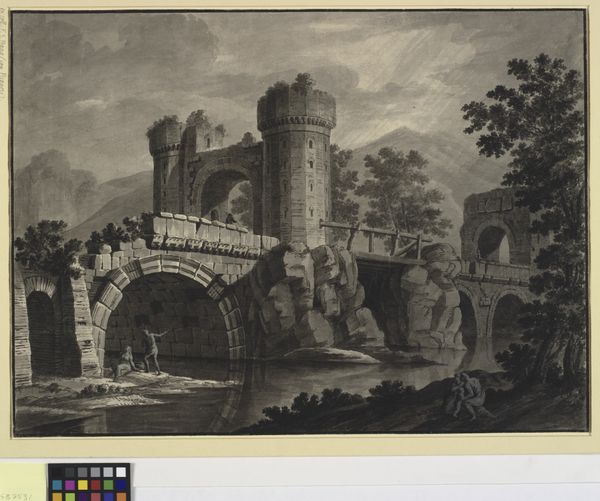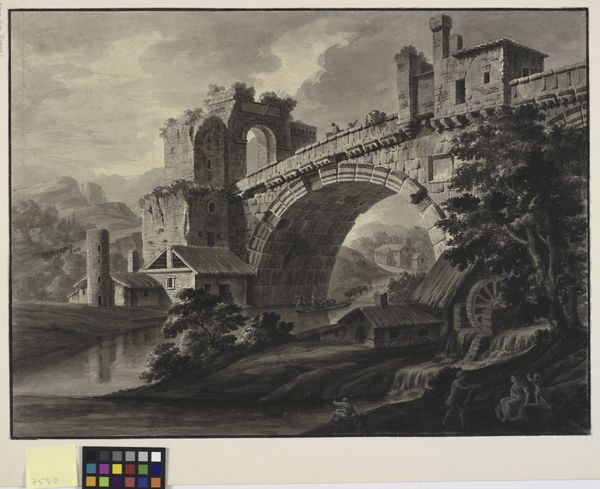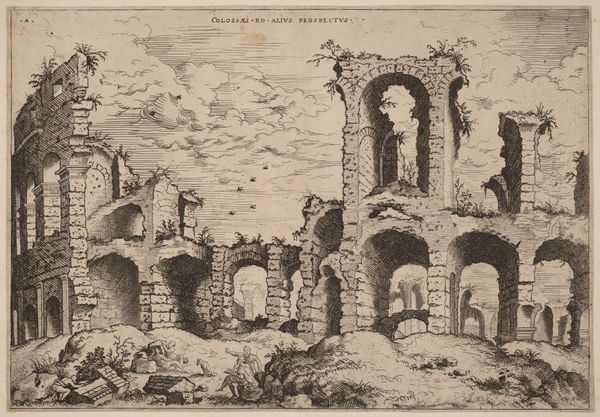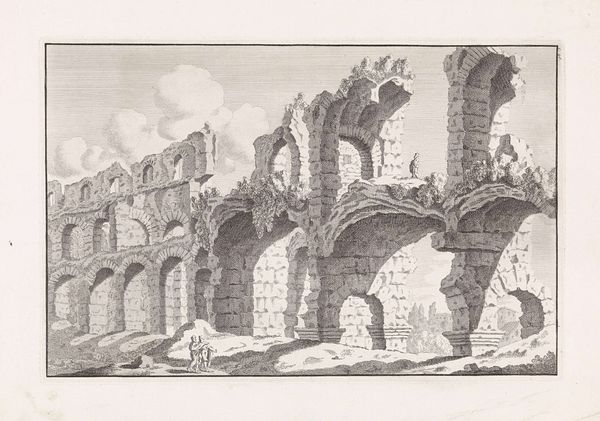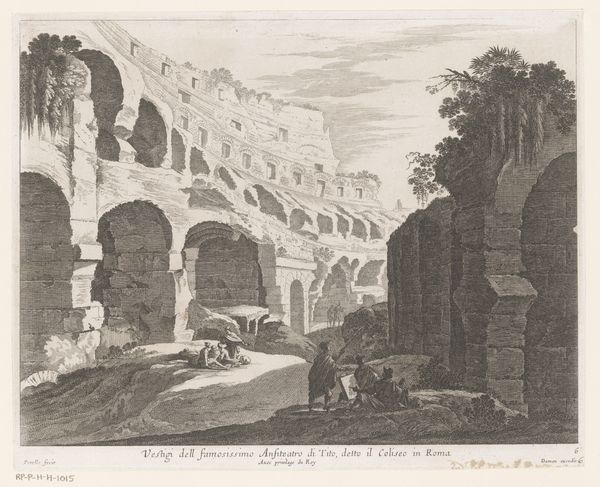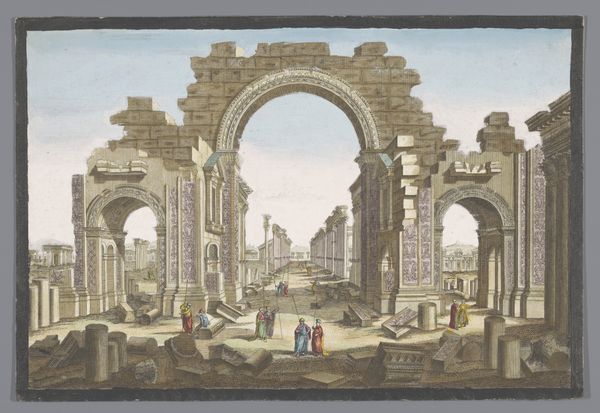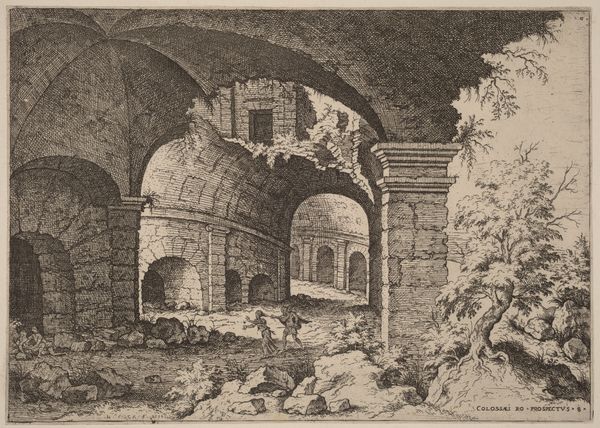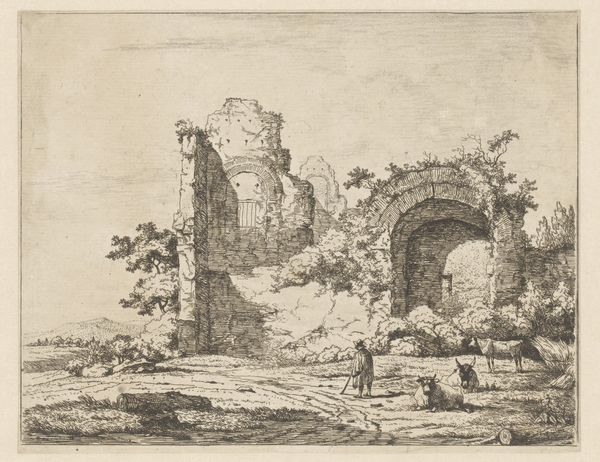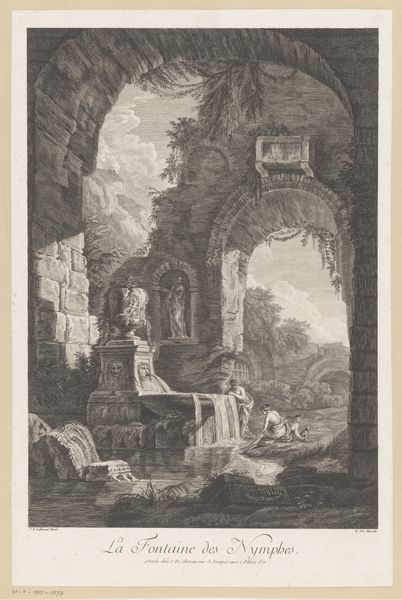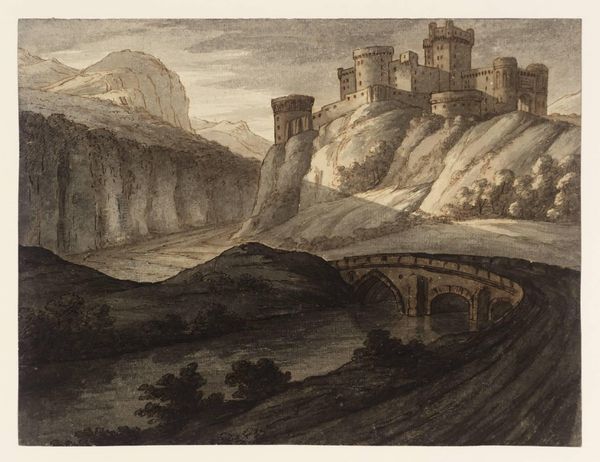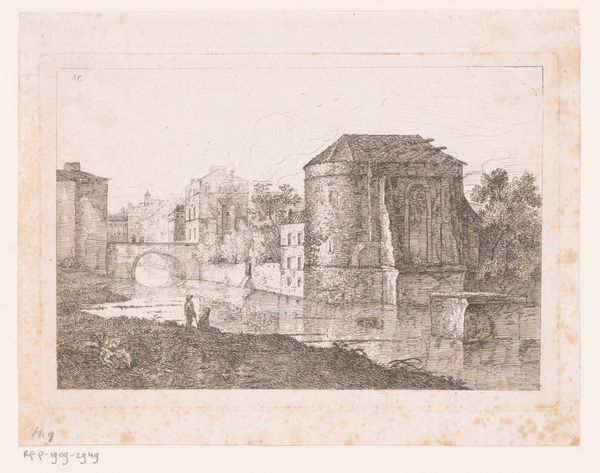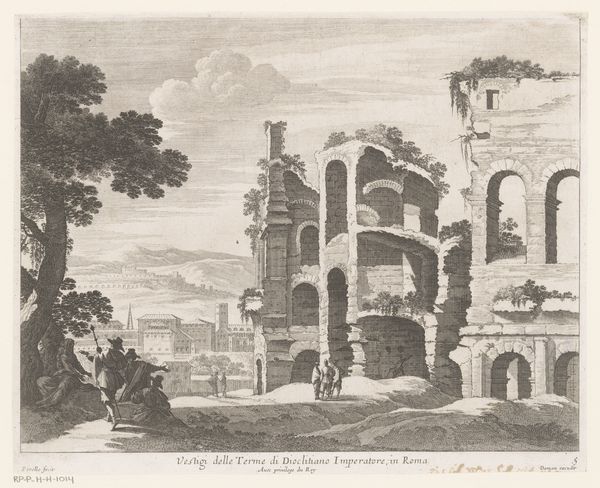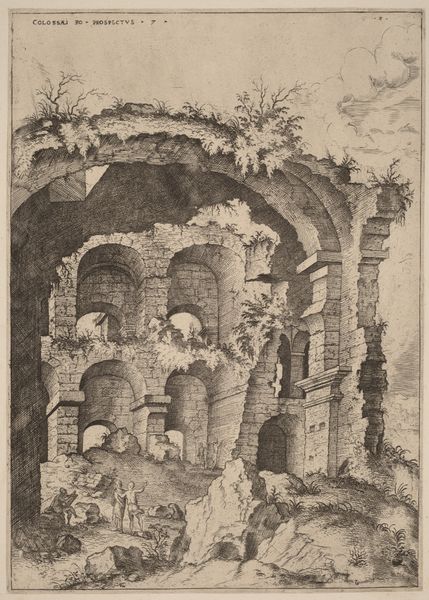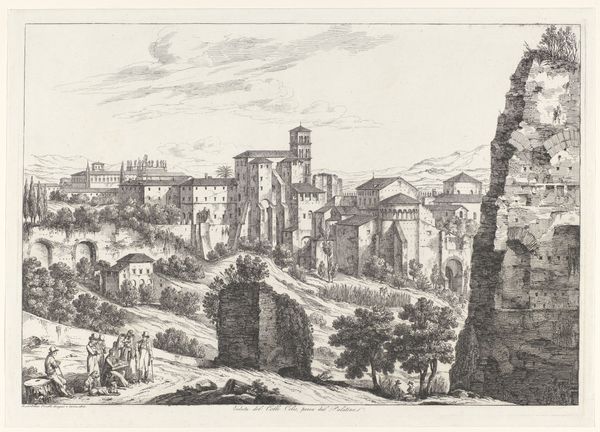
Architectural fantasy. Ruin of antique bridge, flanked by medieval towers 1777
0:00
0:00
drawing, pencil
#
drawing
#
landscape
#
perspective
#
charcoal drawing
#
coloured pencil
#
pencil
#
cityscape
#
history-painting
Dimensions: 422 mm (height) x 570 mm (width) (bladmaal)
Curator: I am immediately drawn into a quiet world of echoes, as if I'm stepping into someone else’s dream of grand architectures gone silent. Editor: Indeed. What you’re responding to, I believe, is precisely what Robert Adam aimed for in this drawing from 1777. It’s titled "Architectural fantasy. Ruin of antique bridge, flanked by medieval towers". Currently residing here at the SMK, it employs pencil and charcoal to realize this vision. Curator: Fantasy is right! There’s a melancholic beauty here. The textures...you can almost feel the cool dampness of the stones and the weight of history pressing down. Even though it’s rendered with what appears to be precision, there is a softness to the ruinous towers, somehow breathing as they are dissolving. Editor: The ‘dissolving’ quality connects directly with Adam’s cultural project. Consider that he was pivotal in popularizing neoclassical architecture, critiquing what he perceived as the excesses of the baroque, particularly its associations with Catholicism. This “fantasy” allows him to showcase imagined, layered histories that circumvent these associations. He is collapsing eras into a statement about aesthetics. Curator: I get that. The ruined arches have this incredible depth, don't they? Like a stage set, inviting contemplation. I feel almost a dramatic tension as I move into it; this is far from a picturesque snapshot. There's a longing in it; a beautiful tension. Editor: The choice to depict ruins specifically also speaks volumes, doesn’t it? It’s more than just aesthetic appreciation. In the 18th century, ruins were associated with notions of lost empires and the inevitable decay of human constructs. They represented a way for viewers to meditate on time, history, and mortality – providing a tangible, ‘safe’ point to consider historical narratives, and how power shifts in human hands over generations. Curator: Well said. The decay reminds us that even the most impressive human achievements are fleeting. A vital piece of perspective. I also love that there's a little suggestion of nature creeping back, softening everything. Almost reclaiming what once was. Editor: And with that reclaiming, Robert Adam offers us a timeless reflection on power, and ultimately on ourselves. Curator: A quiet stage set where the players are always in transition.
Comments
No comments
Be the first to comment and join the conversation on the ultimate creative platform.
